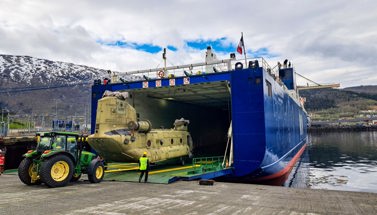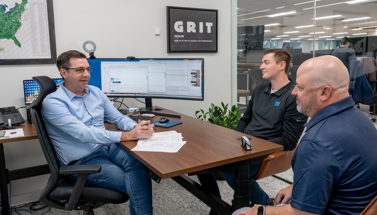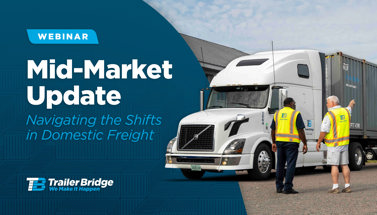
Insights: Breaking Down Factors Impacting Today's Supply Chain
In a recent article, FreightWaves reported “US import demand is dropping off a cliff” as new reports show container volumes returning to pre-pandemic levels. The story comes on the heels of news that retail giants – Target, Home Depot, Wal-Mart and others – were cancelling orders and slashing prices to reduce inventory.
We sat down with Trailer Bridge CEO Mitch Luciano to chat about the factors impacting today’s supply chain and get his insights on what he sees happening in the second half of the year. Luciano has spent the past 25 years navigating supply chain disruption working at industry big hitters like C.H. Robinson and NYK Logistics as well as opening two brokerage offices before joining Trailer Bridge.
“You have to exclude everything you’ve seen in COVID – that’s not normal,” Luciano added as we discussed cargo volumes and the cue of vessels waiting outside ports on the East and West Coast. Luciano says what we are seeing in today’s market is nothing new – stating a similar situation occurred in 2009 as well as during recessions in years past.
The FreightWaves article states volumes are beginning to return to pre-pandemic levels, so what’s the big deal? He says it’s about the amount of money that has been invested in new equipment throughout the past few years to support the spike in demand. “What happens during these times, unfortunately, is suddenly the supply of trucks is higher than the demand so we will see people go out of business. I hate saying that, but it happened in 2009 and I think we will see it again.”
This changes the landscape for shippers as they lose trucking partners who were handling their freight. For one major food supplier, Luciano explains that will look like the loss of approximately 20 percent of their trucking partners. “You begin to see the pendulum shift from asset-based to logistics-based partners as shippers look to find the right partner to ensure their loads are delivered,” said Luciano.
There are a number of factors causing the dip in volumes – less discretionary spending with the end of stimulus packages, inflation and a shift in consumer behaviors. As FreightWaves pointed out we are seeing a shift in spending from goods to services.
“When you go from goods to services, the supply chain now changes,” said Luciano. “The shipper may have been sending 10 boxes from point A to point B, and with this shift what we see is the shipper may now need two boxes delivered to point A, four to point B and one to point C.” Logistics companies, like Trailer Bridge, have the flexibility to quickly shift to meet this change and ensure cargo is delivered.
Even with this shift in purchasing behavior, Luciano still expects we will see the normal influx of cargo this August and September as retailers bring in seasonal products. “If we look back three to four years ago, pre-covid, the supply chain saw an uptick in cargo from August to October as Halloween and Christmas freight began to arrive in the U.S. We should expect to see that again.”
The other big topic here: contract freight vs. spot freight. “In the last 60 days we have seen spot freight almost go away – it’s nothing like we saw last year with the capacity crunch,” said Luciano. “Customers are now wanting contract rates, but they want them for shorter time periods because they know the prices are going down.”
While freight prices may be down, contract customers are key the success of businesses right now explained Luciano. “It’s about creating a partnership with your customer so that you both win as we move through the transition and return to normal conditions.”
The industry is shifting. Is what we are seeing the beginning of the return to a pre-covid normal? Only time will tell. Luciano anticipates we will see some reprieve ahead of the 2024 Presidential Election. In the meantime, industry professionals should aim to keep their finger on the pulse of the industry to understand how they can best plan for their businesses success despite the current headwinds.




